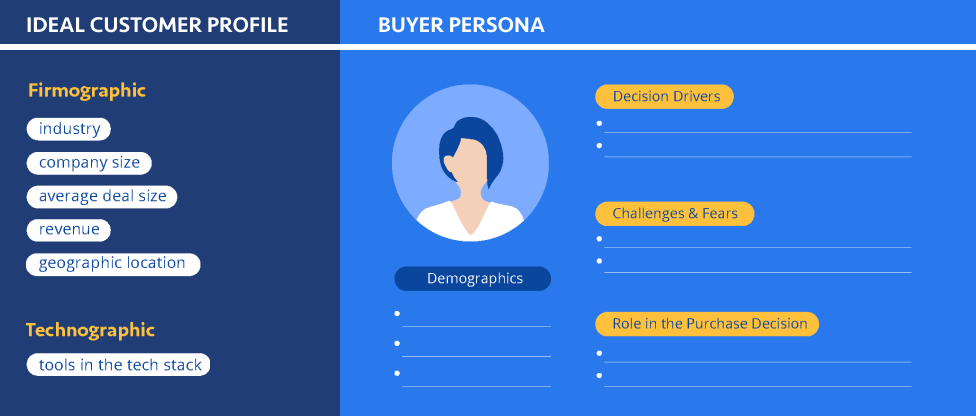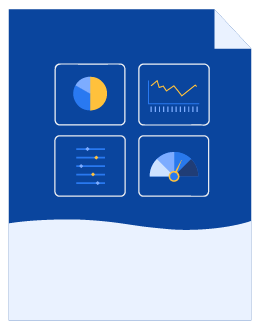Inside sales automation involves the use of software tools and AI technology to perform repetitive tasks, with the goal of saving time for salespeople and allowing them more time to sell. Automated tasks often include administrative or procedural duties, such as dialing, emailing, and leaving voicemails.
Technology has revolutionized the way we do sales, as the rise of the inside sales model will prove. The ability to communicate with buyers from anywhere instantly, as well as tech to help find and organize information about them, has improved salespeople’s ability to build and maintain relationships with their customers.
We’re all for improved customer relationships, and we’re all for making our lives easier with technology. But it’s important to recognize when sales automation becomes a cause for concern and be aware of risks that could negatively impact your sales efforts.
1. Buyers can tell the difference
Sales automation promises to accelerate your sales by giving you the ability to get more done. But increasing the number of leads you can contact doesn’t guarantee you’ll close more deals, especially in B2B sales where winning over a new customer takes more than just time.
Even in 2019, sales is still a human-centric process.
Inside sales outreach requires a one-on-one approach to make prospects feel understood. The quality of your service in the pre-sale stages is just as (if not more) important as in the rest of the relationship.
Some automation tools that can threaten buyer perception include:

Auto dialers

Prerecorded voicemails

Email automation
Auto dialers
Auto dialing software dials through your database for you, typically until it gets a human on the line. It’s meant to save salespeople from calling people individually, saving them precious seconds. But even with a sophisticated auto dialer, you run the risk of ruining a good sales call and how the contact perceives your company.
By the time a person answers, your rep may not be ready to give their pitch. Depending on how your auto dialer works, there may be a delay to connect the call or there may not be a rep immediately available.
In most cases, using an auto dialer results in an awkward pause that could determine whether the prospect hangs up or actually listens to what you have to say. People today, particularly those who are busy at work, don’t have the patience for automated calls and will view your company as less credible after receiving one.
Prerecorded voicemails
Some sales teams take it a step past auto dialers and automate leaving voicemails too. Salespeople and SDRs of automation nation can click once to start dialing and click again to leave a prerecorded voicemail.
Are the 15 seconds you save by leaving a canned voicemail on your prospect’s machine worth the risk of immediate deletion? If you want to capture attention with a voicemail, your message should be tailored to the person hearing it.
According to LinkedIn’s State of Sales Report:
96%
of decision makers say they’re more likely to consider a solution when the salesperson demonstrates a clear understanding of their business needs.
of decision makers say they’re more likely to consider a solution when the salesperson demonstrates a clear understanding of their business needs.
Your buyers want to know what’s in it for them, and an automated voicemail message is less than likely to convince them. Instead, tell prospects how your solution solves their specific pain points, relative to their business and their role.
Email automation
Like voicemails, emails should give prospects the specifics of how your solution can help their business. But sales teams that utilize email automation group long lists of contacts together into one email send. Even with auto-populating fields (like contact names and company names), automated sales emails often lack enough personalization to make an impact.
Sending hundreds or thousands of emails at once also puts you at high risk for mistakes. Sales reps can easily send emails to unsubscribed contacts or the wrong account lists, especially if your email automation platform doesn’t integrate well with your CRM.
Consider the impact on your brand if you persistently badger people who have unsubscribed, or even your current customers, with sales emails.
2. Wasting time & money
Sales enablement tools cost money. SDR teams alone report spending $371 per rep per month on sales acceleration tools, according to a report by The Bridge Group.
How can you be sure that you’re getting a positive ROI from those expensive automation tools? It’s difficult to attribute success to tools like the ones we mentioned above, especially when you’re faced with the following possibilities of wasting money (and time).
Burning through your data
In our experience, there are two different approaches to utilizing sales data. We take an account-based approach to data, where we hand-pick accounts based on our ideal customer profile, build out account details as we develop the relationship, and take a focused approach to the potential market.
Some companies choose to take a more automated approach, buying lead lists with thousands of contacts and feeding them through auto dialers and email automation with hopes that some contacts will engage. The problem with this approach is that it burns through your data quickly and can result in many unsubscribes.
The automated approach prioritizes short-term gain. While it may help you hit your numbers this quarter, the time and money you spend on building out these lists is wasted by taking this scorched-earth approach to your database instead of organically nurturing prospects.
We know that a narrowly defined buyer persona is most effective for B2B sales, which means you have a finite market of companies that are a good fit for your solution.

Surrendering all of your potential target market to automation is really just wasting leads.
If you want to save your sales team from spending time calling bad leads, you need to build a reliable lead database from the start. EBQ can help you build, validate, and augment your database to improve connection rates and increase sales productivity. Learn more about our data services.

Beginner’s Guide to B2B Sales Data Management
Learn everything you need to know about collecting prospect data and maintaining the health of your database.
Blacklisting
Especially when working with a large database, email automation can result in your email address, domain, or IP address getting blacklisted. This means messages you send won’t be delivered to your prospects.
The most common causes of blacklisting are closely associated with email automation:
- Sudden increases in email sending volume
- High rate of emails flagged as spam
- Bad email list data (too many invalid email addresses)
- Spam-like words or phrases in email content
Once blacklisted, you must go through a lengthy process to get your domain delisted by requesting removal directly from the email provider, internet service provider, or third-party that operates the list. And if you’re blacklisted more than once, it will be more difficult (and eventually impossible) to delist.
We suggest you leave email automation up to your marketing team, instead of in the hands of your salespeople who likely don’t have a grasp of best practices for mass emailing or understand the risks.
Penalties
How much do you trust your contact data? If you use an auto dialer, one inaccurate phone number could end up costing you. Business-to-business sales calls might be excused as just an interruptive aspect of the professional world. But using automation to call mobile phones of individuals who have not opted into your communications can result in fines. Under the Telephone Consumer Protection Act (TCPA), your company may be charged $1,600 or more per violation. Both auto dialers and prerecorded voice messages put your company at higher risk of violation, and the fines can add up quickly. Even B2B companies need to be meticulous about the numbers they’re dialing and how they’re dialing them in order to avoid penalties.3. Less engaged salespeople
Your salespeople will only get better at selling your solution through experience — by practicing pitching, identifying pain points, and handling objections. If your sales process is over-automated, reps get fewer chances to engage with buyers and gain this experience.
Manually leaving voicemails (instead of depending on a recording) keeps your sales staff sharp and ready to engage with their prospects. A salesperson that leaves personalized voicemails for their prospects essentially gets practice articulating their value propositions continually throughout the day.
But reps who rely on automated voicemails miss out on opportunities to rehearse their pitch.
If your salespeople spend their time auto dialing through a list and leaving voicemails with a single click, your sales strategy will eventually suffer from a lack of preparation.
Especially with the younger workforce found in entry-level inside sales roles, reps often get distracted while automatically dialing through (thanks, Facebook) and aren’t prepared for a sales conversation by the time they get a human on the line. This only worsens that infamous auto dialer delay and makes for an overall inferior pre-sales experience, which both negatively impact the perception of your company.
An unhealthy reliance on automation causes reps to view each prospect as just another number, instead of as an opportunity to initiate a business relationship and solve the prospect’s pains.
Make a call, not a dial
“Make a call, not a dial” is a go-to mantra for our inside sales teams. Every touchpoint counts, and the element of human interaction is just as important as ever for sales effectiveness.
Once the sales process begins to lose that human element, that’s when you know you’ve automated too far. But companies need to recognize the dangers of inside sales automation before they go too far, before they damage their brand reputation, and before they waste valuable lead data.


